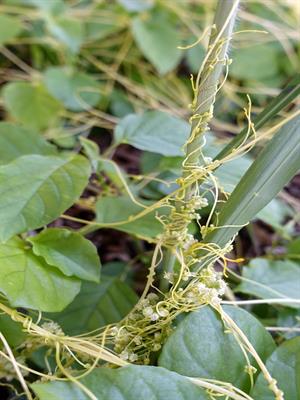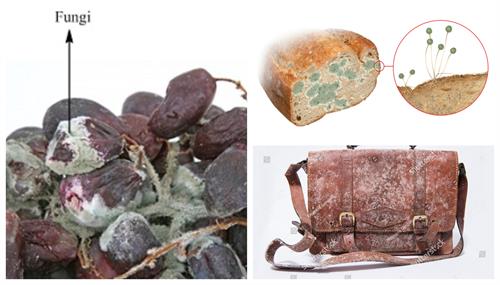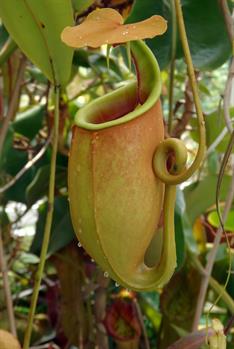PDF chapter test TRY NOW
Certain plants in nature do not have chlorophyll and hence cannot produce their food. These plants use the heterotrophic mode of nutrition to derive nourishment for their survival.
In heterotrophic nutrition, organisms directly or indirectly depend on autotrophs for food.
Organism cannot produce its food by carbon fixation but derives nutrition from other organic carbon sources, mainly plant or animal matter are called heterotrophs.
There are three types of heterotrophs in plants:
- Parasites
- Saprophytes
- Insectivorous
Parasitic nutrition
In this mode, the organism lives inside or outside the body of another (host) organism. Such organisms are called parasites.
They take food from the other organism and sometimes may even kill the organism in which they live.
Parasitic plants:
A parasitic plant is a plant that derives some or all of its nutritional requirement from another living plant.
Cuscuta reflexa (Amarbel) is a yellow tubular plant twisting around the stem and branches of a tree. It does not have chlorophyll and hence cannot make its food. They climb on other trees known as host plant and absorb the readymade food. Therefore plants like Cuscuta are known as parasite.

Cuscuta plant
Saprophytic nutrition
Microorganisms, such as fungi use a saprotrophic feeding mode, and these organisms are known as saprophytes.
Generally, saprophytes feed on decomposing matter from dead organisms.

Fungi growth on decomposed materials
These fungal spores are present in the air and grow as dark patches on the food items or other items like pickles, leather and clothes during the humid and rainy season. They sit on dead and decaying matter where they germinate and grow.
Example:
Yeast and mushroom
Insectivorous plants
Certain types of plants feed on insects for their need of nitrogen, as they cannot get nitrogen from the soil. These plants are carnivorous and are called insectivorous plants.
These plants eat insects for their nutrition. They trap and digest insects. Since these can synthesise their food but still their nitrogen deficiency by eating insects, these are called partial heterotrophs.

Leaves of a pitcher plant
The pitcher leaf trapping the insect
- These plants have specialised leaves. In this type of plant, the leaf is in the form of a pitcher or jug-like structure.
- The apex of the leaf forms a lid that can open and close the pitcher's mouth.
- There are several hair-like structures present inside the pitcher. These hairs are directed downwards.
- The bright colour of the plants makes them very attractive to insects.
- When an insect lands on the plant's pitcher, the lid closes around it and traps the insect inside.
- The insect trapped inside the pitcher is digested by the digestive juices secreted inside it. The plant then absorbs the nutrients of the insect.
Reference:
https://pixabay.com/photos/pitcher-plant-nepenthes-bicalcarata-3362417/
